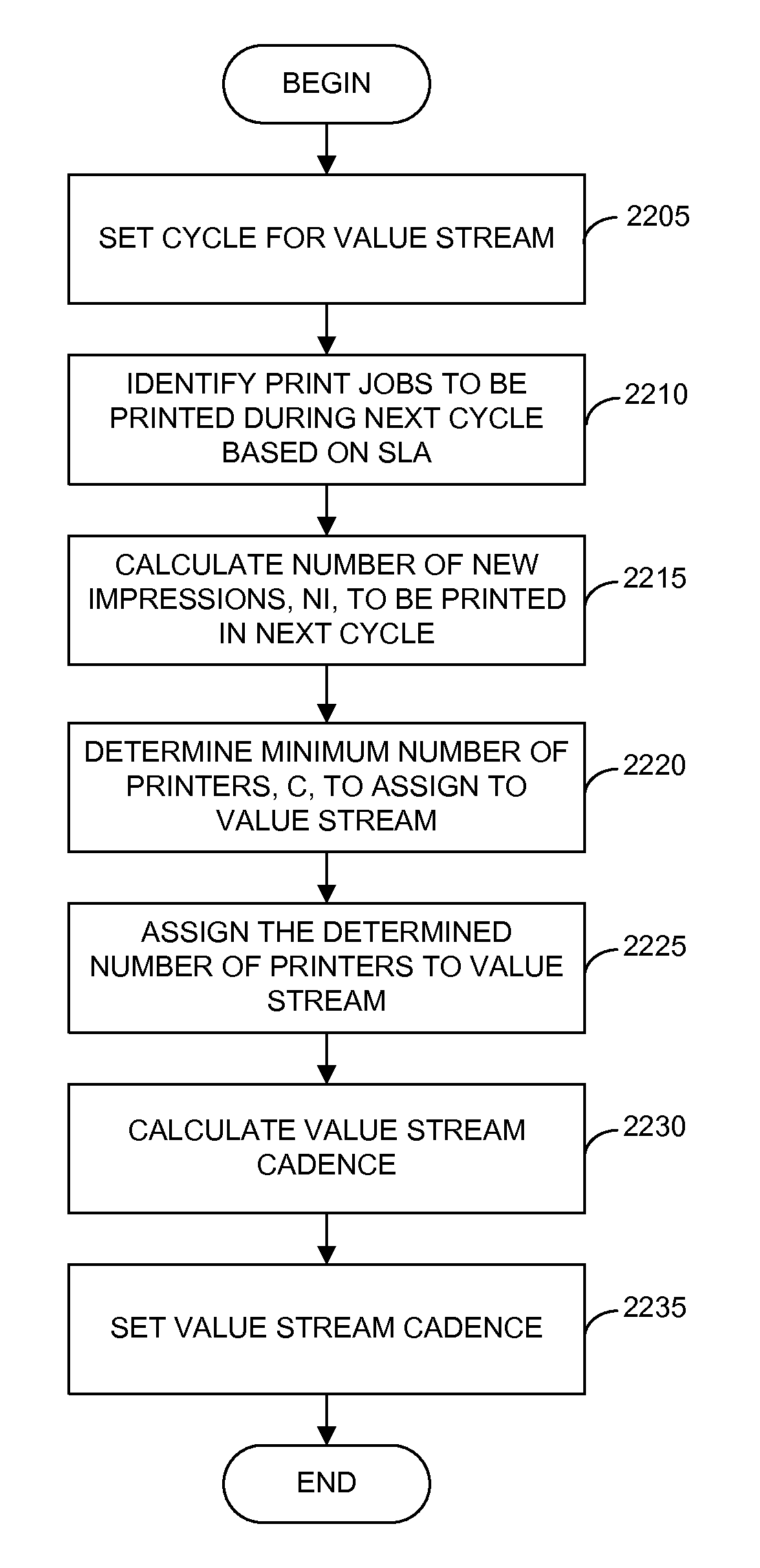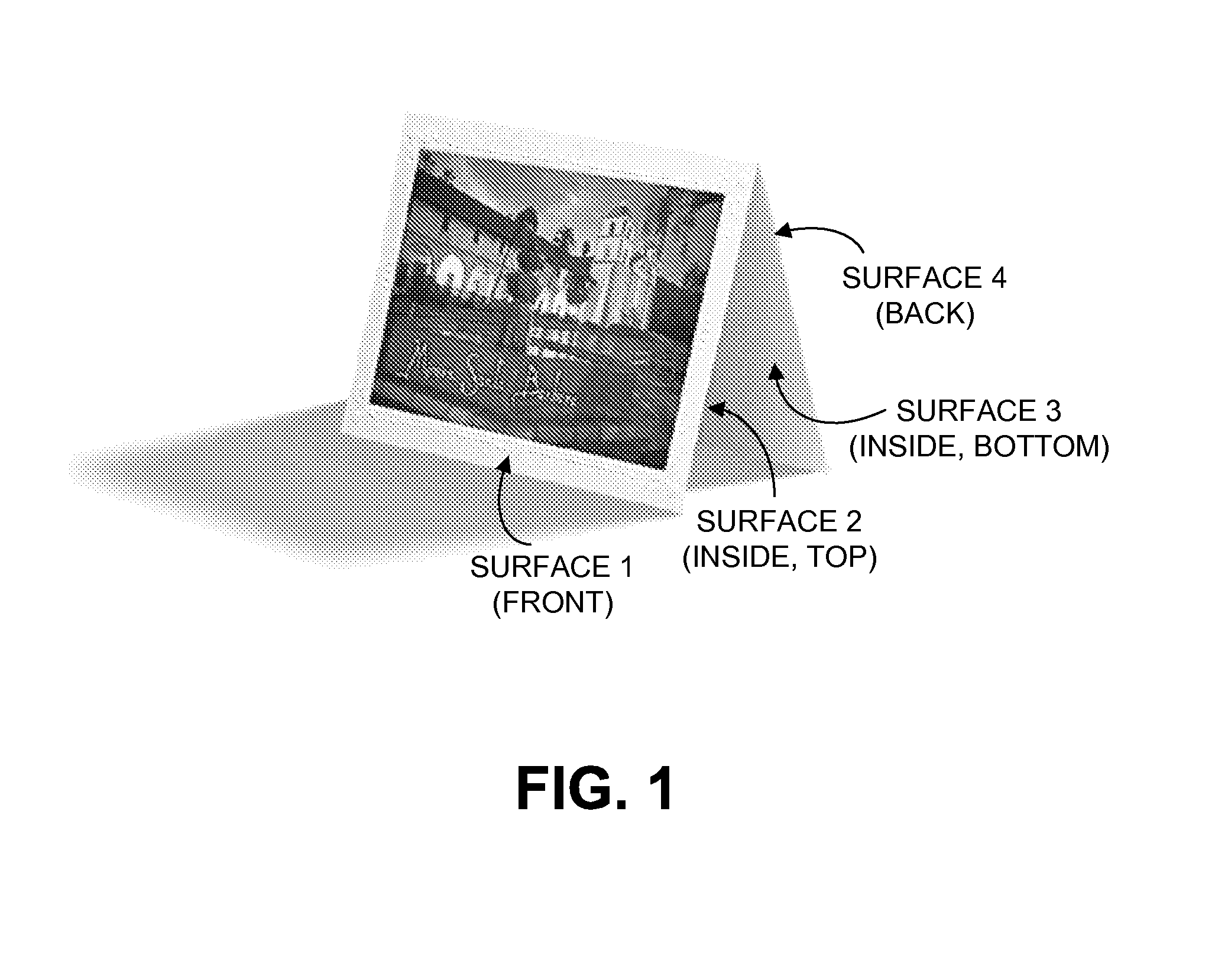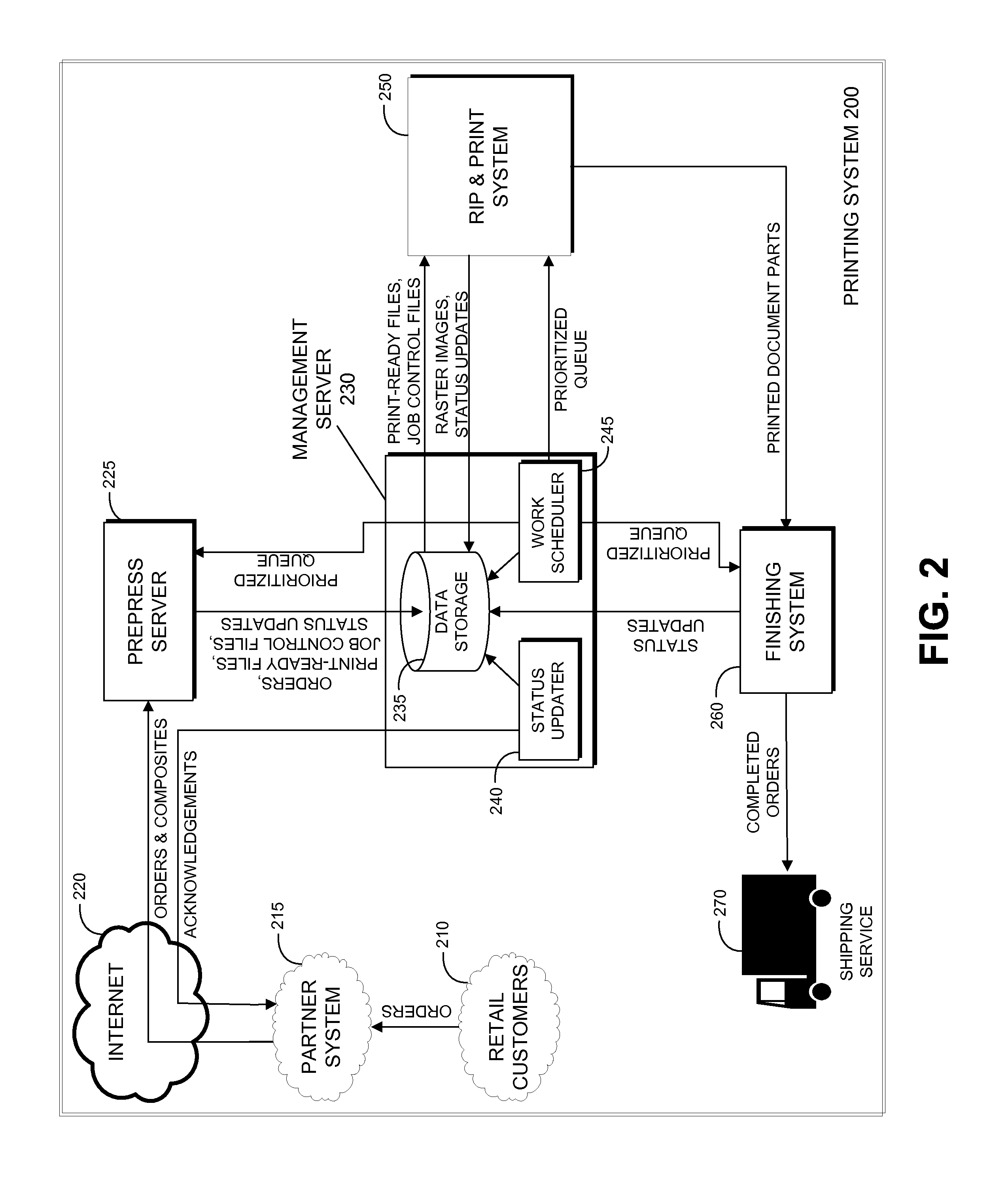Multiproduct printing workflow system with dynamic cadence
a multi-product printing and workflow technology, applied in the field of commercial printing systems, can solve problems such as time delay, and achieve the effects of optimizing efficiency and profitability, avoiding paper waste, and efficient use of printers and other resources
- Summary
- Abstract
- Description
- Claims
- Application Information
AI Technical Summary
Benefits of technology
Problems solved by technology
Method used
Image
Examples
Embodiment Construction
[0039]The present invention concerns a printing system that accepts orders from business partners and manages a print workflow to enable the printing system to meet service level agreements (SLAs). The printing system is operated by a printing system provider. Print orders flow into the system from one or more partners, where a partner is a company or organization that operates a system, referred to as a “partner system,” that receives print orders from retail customers. The partner system can be inter alia a web-based system or a retail store. For each partner there is a service level agreement (“SLA”) between the printing system provider and the partner that defines inter alia the products that the printing system can accept and print, and the maximum delay to be incurred in printing each product. The present invention relates to the ability of the printing system to meet the SLA-defined maximum delay requirements.
[0040]For purposes of clarity, a print order, or simply an “order,”...
PUM
 Login to View More
Login to View More Abstract
Description
Claims
Application Information
 Login to View More
Login to View More - R&D
- Intellectual Property
- Life Sciences
- Materials
- Tech Scout
- Unparalleled Data Quality
- Higher Quality Content
- 60% Fewer Hallucinations
Browse by: Latest US Patents, China's latest patents, Technical Efficacy Thesaurus, Application Domain, Technology Topic, Popular Technical Reports.
© 2025 PatSnap. All rights reserved.Legal|Privacy policy|Modern Slavery Act Transparency Statement|Sitemap|About US| Contact US: help@patsnap.com



